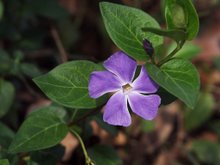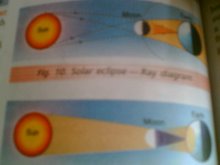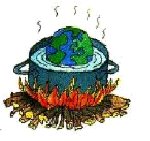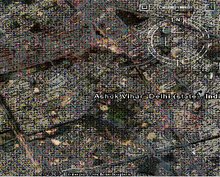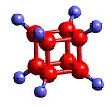There exists a great diversity and complexity among the microorganisms.
5 Groups:
(i)Bacteria
(ii)Protozoa
(iii)Algae
(iv)Fungi
(v)Viruses
Monday, 16 May 2011
significance of lactobacillus in the formation of curd
What is the significance of lactobacillus in the formation of curd?
Lactobacillus is a kind of bacteria which can convert a sugar into an alcohol and then into an acid by means of anaerobic respiration.
Milk contains a sugar called lactose, a disaccharide (compound sugar) made by the glycosidic bonding between glucose and glactose (monosaccharides).
When milk is heated to a temperature of 30-40 degrees centigrade and a small amount of old curd added to it, the lactobacillus in that curd sample gets activated and multiplies. These convert the lactose into lactic acid, which imparts the sour taste to curd.
Lactobacillus is a kind of bacteria which can convert a sugar into an alcohol and then into an acid by means of anaerobic respiration.
Milk contains a sugar called lactose, a disaccharide (compound sugar) made by the glycosidic bonding between glucose and glactose (monosaccharides).
When milk is heated to a temperature of 30-40 degrees centigrade and a small amount of old curd added to it, the lactobacillus in that curd sample gets activated and multiplies. These convert the lactose into lactic acid, which imparts the sour taste to curd.
MICROORGANISMS : FRIENDS OR FOES?
Friendly Microorganisms
Microorganisms are used for various purposes. They are used in the preparation of curd, bread and cake. They have been used for the production of alcohol since ages.
They are also used in cleaning up the environment. For example, the organic waste (vegetables peels, remains of animals, faeces etc.) are broken down in to harmless and usable substances by bacteria.
Making curd and Bread
Curd contains several microorganisms. Of these the bacterium Lactobacillus promotes the formation of curd. It multiplies in milk and converts it into curd. Bacteria also involved in the making of cheese, pickles and many other food items.
Yeast reproduces rapidly and carbon dioxide during respiration bubbles of the gas
Fill dough and increase its volume. This is the basis of the use of yeast in baking industries for making breads, pastries and cakes.
Commercial Use of Microorganism
Microorganisms are used for the large scale production of alcohol, wine and acetic acid (vinegar). Yeast is used for commercial production of alcohol and wine. For this yeast is grown on natural sugars presents in grains, barely, wheat, rice, crushed fruit juices, etc.
This is the smell of alcohol as sugar has been converted into alcohol by yeast. This process of conservation of sugar into alcohol is known as fermentation.
Medicinal use of Microorganism
Whenever we fall ill the doctor may give some antibiotics such as penicillin. The source of this medicine is microorganism. These medicines kill or stop the growth of the disease causing microorganism such medicines are called antibiotics. Streptomycin, tetracycline is some of the commonly known antibiotics which are made from fungi and bacteria. The antibiotics are manufactured by growing specific Microorganism and are used to cure a variety of disease.
Vaccine
When a disease carrying microbe enters our body, the body produces antibodies to fight the invader. The body also remembers how to fight the microbe if enters again. So if the dead or weakened microbes are introduced in a healthy body, the body fights and kills them by producing suitable antibodies. This is how a vaccine works. Several disease including cholera, tuberculosis, smallpox and hepatitis can be prevented by vaccination. These vaccinations are made up form Microorganism to protect humans and other animals from several diseases.
Increasing Soil Fertility
Some bacteria and blue green algae are able to fix nitrogen from the atmosphere to enrich soil with nitrogen and increase its fertility. These microns are commonly called biological nitrogen fixers.
Cleaning the Environment
Microorganisms can be used to degrade the harmful and smell substances and thereby clean up the environment.
So we can say that microorganisms are friends of us in many ways.
Harmful Microorganisms
Microorganisms are harmful in many ways. Some of the Microorganisms cause disease in humans, plants and animals these disease causing microorganisms are called Pathogens. Some Microorganisms spoil food, clothing and even leather.
Diseases causing Microorganisms in Humans
Pathogens enter in our body through the air we breathe, the water we drink and the food we eat. They can also get transmitted by direct contact with an infected person or carried through an animal. These kind of microbal diseases are called communicable diseases as they spread from the infected persons for example common cold, chicken pox, tuberculosis and many more.
When a person suffering from common cold sneezes, fine droplets of moisture carrying thousands of viruses spread in the air. The virus may enter the body of health person while breathing. There are some insects and animals which act as carriers of disease causing microbes.
Diseases causing Microorganisms in Animals
Several microorganisms not only cause disease in humans and plants but also in other animals. For example, anthrax is a dangerous diseases caused by bacterium. Foot and mouth disease of cattle is caused by a virus.
Diseases causing Microorganisms in Plants
Several microorganisms caused disease in plants like wheat, rice, potato, sugarcane, orange and others. The disease reduces the yield of crop. They can be controlled by the use of certain chemicals which kill the microbes.
Food Poisoning
it can be due to consumption of food spoilt by some microorganisms. Microorganism that grow on our food sometimes produce toxic substances, these make the food poisonous causing serious illness and even death. So it is very important that we preserve food to prevent it form being spoilt.
So in this way we can say that Microorganism is harmful to us.
Microorganisms are used for various purposes. They are used in the preparation of curd, bread and cake. They have been used for the production of alcohol since ages.
They are also used in cleaning up the environment. For example, the organic waste (vegetables peels, remains of animals, faeces etc.) are broken down in to harmless and usable substances by bacteria.
Making curd and Bread
Curd contains several microorganisms. Of these the bacterium Lactobacillus promotes the formation of curd. It multiplies in milk and converts it into curd. Bacteria also involved in the making of cheese, pickles and many other food items.
Yeast reproduces rapidly and carbon dioxide during respiration bubbles of the gas
Fill dough and increase its volume. This is the basis of the use of yeast in baking industries for making breads, pastries and cakes.
Commercial Use of Microorganism
Microorganisms are used for the large scale production of alcohol, wine and acetic acid (vinegar). Yeast is used for commercial production of alcohol and wine. For this yeast is grown on natural sugars presents in grains, barely, wheat, rice, crushed fruit juices, etc.
This is the smell of alcohol as sugar has been converted into alcohol by yeast. This process of conservation of sugar into alcohol is known as fermentation.
Medicinal use of Microorganism
Whenever we fall ill the doctor may give some antibiotics such as penicillin. The source of this medicine is microorganism. These medicines kill or stop the growth of the disease causing microorganism such medicines are called antibiotics. Streptomycin, tetracycline is some of the commonly known antibiotics which are made from fungi and bacteria. The antibiotics are manufactured by growing specific Microorganism and are used to cure a variety of disease.
Vaccine
When a disease carrying microbe enters our body, the body produces antibodies to fight the invader. The body also remembers how to fight the microbe if enters again. So if the dead or weakened microbes are introduced in a healthy body, the body fights and kills them by producing suitable antibodies. This is how a vaccine works. Several disease including cholera, tuberculosis, smallpox and hepatitis can be prevented by vaccination. These vaccinations are made up form Microorganism to protect humans and other animals from several diseases.
Increasing Soil Fertility
Some bacteria and blue green algae are able to fix nitrogen from the atmosphere to enrich soil with nitrogen and increase its fertility. These microns are commonly called biological nitrogen fixers.
Cleaning the Environment
Microorganisms can be used to degrade the harmful and smell substances and thereby clean up the environment.
So we can say that microorganisms are friends of us in many ways.
Harmful Microorganisms
Microorganisms are harmful in many ways. Some of the Microorganisms cause disease in humans, plants and animals these disease causing microorganisms are called Pathogens. Some Microorganisms spoil food, clothing and even leather.
Diseases causing Microorganisms in Humans
Pathogens enter in our body through the air we breathe, the water we drink and the food we eat. They can also get transmitted by direct contact with an infected person or carried through an animal. These kind of microbal diseases are called communicable diseases as they spread from the infected persons for example common cold, chicken pox, tuberculosis and many more.
When a person suffering from common cold sneezes, fine droplets of moisture carrying thousands of viruses spread in the air. The virus may enter the body of health person while breathing. There are some insects and animals which act as carriers of disease causing microbes.
Diseases causing Microorganisms in Animals
Several microorganisms not only cause disease in humans and plants but also in other animals. For example, anthrax is a dangerous diseases caused by bacterium. Foot and mouth disease of cattle is caused by a virus.
Diseases causing Microorganisms in Plants
Several microorganisms caused disease in plants like wheat, rice, potato, sugarcane, orange and others. The disease reduces the yield of crop. They can be controlled by the use of certain chemicals which kill the microbes.
Food Poisoning
it can be due to consumption of food spoilt by some microorganisms. Microorganism that grow on our food sometimes produce toxic substances, these make the food poisonous causing serious illness and even death. So it is very important that we preserve food to prevent it form being spoilt.
So in this way we can say that Microorganism is harmful to us.
Friendly Microorganisms
The concept of ‘Friendly Microorganisms’ was developed by Professor Teruo Higa, from the University of the Ryukyus in Okinawa, Japan. He reported in the 1970s that a combination of approximately 80 different microorganisms is capable of positively influencing decomposing organic matter such that it reverts into a ‘life promoting’ process. Higa invokes a ‘dominance principle’ to explain the effects of his ‘Effective Microorganisms’. He claims that three groups of microorganisms exist: ‘positive microorganisms’ (regeneration), ‘negative microorganisms’ (decomposition, degeneration), ‘opportunist microorganisms’. In every medium (soil, water, air, the human intestine), the ratio of ‘positive’ and ‘negative’ microorganisms is critical, since the opportunist microorganisms follow the trend to regeneration or degeneration. Therefore, Higa believes that it is possible to positively influence the given media by supplementing with positive microorganisms.
Subscribe to:
Posts (Atom)








